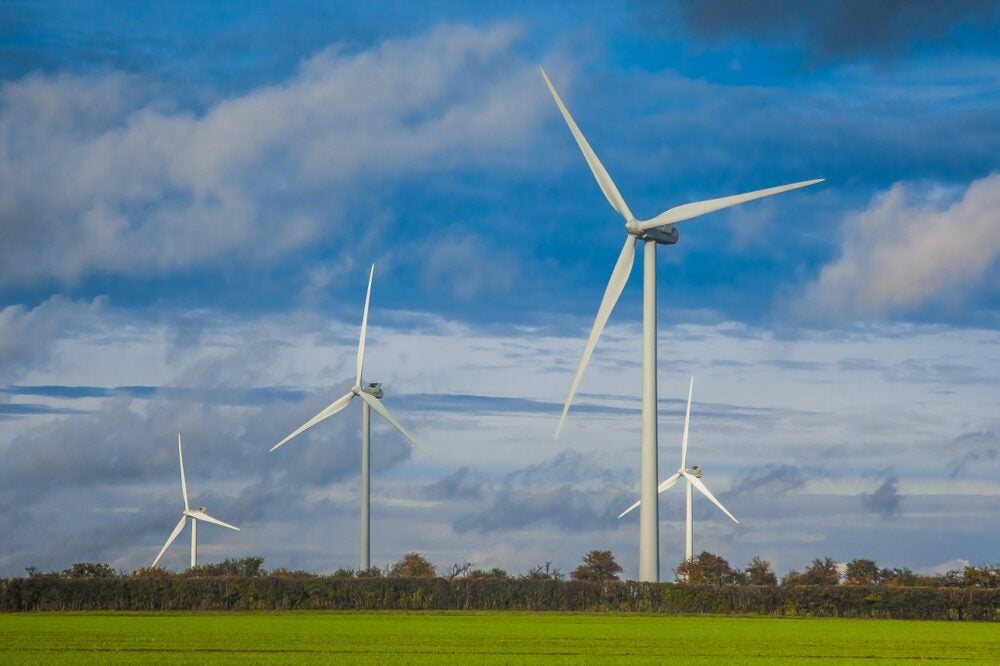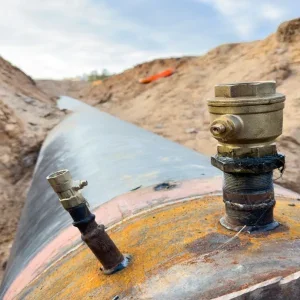
With its “Fit-for-55 Package” the EU wants to create the right framework for an emissions reduction of 55% by 2030 and set the course for carbon neutrality by 2050.
The package will include a higher renewable energy target, but analysis by trade body WindEurope claims targets alone will not deliver the wind volume Europe needs to achieve its climate goals.
EU member states have agreed to raise the bloc’s 2030 emissions reduction target from 40% to “at least 55%”, which means its current 32% renewable energy target for the end of the decade needs to be increased. According to the latest European Commission Impact Assessment, the new target needs to be between 38-40%.
This means the EU needs 433-452 gigawatts (GW) of wind energy capacity by 2030, a threefold increase on the 179 GW installed today. And by 2050, the EU wants a 20-fold increase in offshore wind capacity, alongside an even bigger increase in the absolute number of new onshore wind capacity.
But Europe is currently not installing enough new wind, according to data from WindEurope. It expects annual wind installations to be 15 GW per year in the period 2021-2025, but the EU needs 27 GW annually if it wants to meet the new 55% emissions reduction target.
WindEurope CEO Giles Dickson said: “The barrier to the expansion of wind energy needed for the Green Deal is not technology. Nor cost. Nor financing. It’s permitting. Europe is simply not permitting enough new wind farms to reach its renewable energy targets.
“The rules and procedures are too complex. There aren’t enough staff to process the permit applications. It’ll be nice to have a higher renewables target, but it’ll be academic if we don’t tackle permitting.”
Fit for 55 Package should ensure EU member states issue guarantees of origin to renewable electricity producers
WindEurope said the EU needs to improve permitting procedures for new, repowered and hybrid renewable energy projects. It believes the bloc should not only mandate member states to speed up permitting but also “show them how to do it”.
The trade body proposes the EU spells out good permitting practices that empower national governments to “address the critical bottlenecks in permitting”.
It believes urgent action is also needed on power purchase agreements (PPAs) and has called upon the European Commission to further facilitate the uptake of corporate renewable PPAs to support future wind energy deployment.

The analysis notes that the Fit for 55 Package should ensure member states issue guarantees of origin to renewable electricity producers, irrespective of whether the renewable energy projects receive government support. Guarantees of origin make electricity from wind “traceable” and are indispensable to the development of corporate PPAs.
Wind Europe recommends that the Fit for 55 Package should further ensure that the renewable energy directive reflects the need to prioritise direct renewable-based electrification, which it believes is the “fastest and more efficient way to decarbonise Europe’s economies”.
It should also include a clear definition of renewable hydrogen and a robust traceability mechanism to underpin its market uptake towards competitiveness within this decade, the trade body said.
“Wind is central to the EU’s climate ambitions,” added Dickson. “For decarbonising electricity and decarbonising industry. More and more companies are looking to decarbonise their manufacturing and data processes with cheap wind power.
“The Fit-for-55 package needs to ensure they can source renewables with their own PPAs – which means having a workable system of guarantees of origin in the renewables directive.”
Revised EU ETS can incentivise direct electrification
The analysis notes that a revised EU Emission Trading System (ETS) can incentivise direct electrification and accelerate the expansion of renewable energies.
It added that the ETS must align with the new 55% climate target through a mix of “rebasing and adjustment in the linear reduction factor”.
WindEurope also believes the package needs to ensure Europe’s climate commitment does not undermine the competitiveness of its industrial base, which is where is claims a well-designed Carbon Border Adjustment Mechanism (CBAM) can play an important role.
It said the CBAM should reflect that Europe’s wind industry relies on global supply chains and it mustn’t undermine the regions competitiveness, but it added that the mechanism should allow for European exports that will “deliver the global energy transition”.






